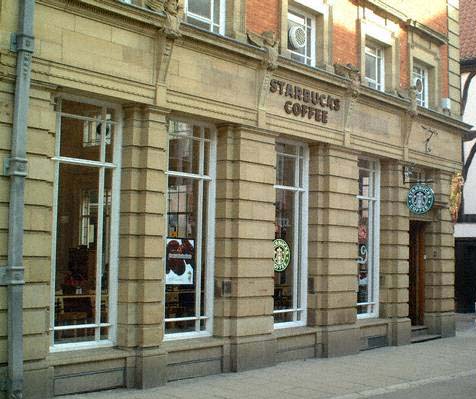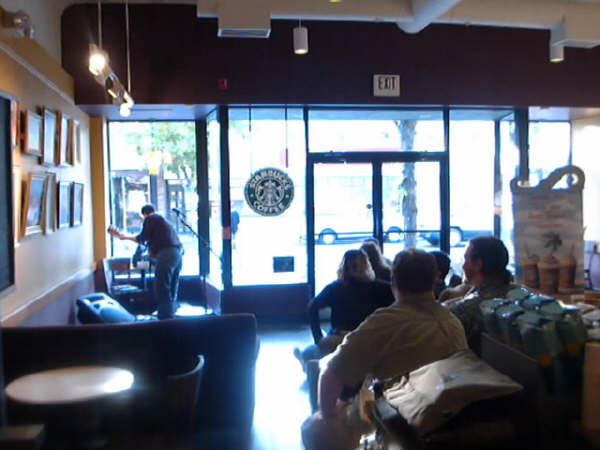
Starbucks
Store Front, York




Starbucks Products




Inside view of Starbucks, Melrose Center, LA
Still, Starbucks has a polysemic reputation; what some so greatly value, others detest. For the adversative, the green awning on the corner called Starbucks is an offensive facade. It has replaced the 'mom-and-pop' coffee shops where friendly faces were recognized, and orders memorized. Anti-Starbucksers have an appreciation for simplicity, and are not interested in the extravagance of exotic blends and complex cold, hot, and festive drinks. For them, Starbucks' attempt at different and modern has failed miserbly. Perhaps because their children can no longer get their crumb cake and hot chocolate from the familiar couple that had been selling it down the street for 50 years. Or as is the case for most, Starbucks is simply unaffordable. Consequently, many have feelings of animosity towards this money-mongering corporation that has bought out the coffee shops of their families' childhoods. "The most vulnerable participants in place markets are those with the fewest alternatives" (Logan and Molotch, 23). 'Mom-and-pop' shops have no choice but to leave. Starbucks as a dominating and successful corporation, does not have these concerns. Their interest is not in sentimentality (although that is how they would like to appear), but rather "The paramount interest is the profitability of their operations; concerns with place turn heavily on how well land and buildings serve that overarching goal" (22). People see this, and choose not to buy their coffee there.
On the other hand, for those who do go to Starbucks, the reasons are very apparent and in concurrence with their lifestyles. It's about the value of origin. Starbucks' 36 types of coffee come from exotic countries such as Arabia, Columbia, Ethiopia, Guatemala, Antigua, and Kenya. It sells 22 types of teas in exotic flavors, as well as tries to instill a spiritual feeling with names like Zen, Refresh, Calm and Awake. Starbucks caters to people of this type of literacy who desire these kinds of options and environment. The sign values exist in their attraction of their foreign goods, getting a little bit extra for their money. "Added value, on the one hand, is the resulting economic benefit of innovative combinations of technologies or services; on the other, it is the value vested in a product's identity, which stirs the consumer's imagination and elevates his status"(Harvard Design, 165). In essence, Starbucks feeds and stands for an image that its upper class customers are after. Part of this added value is Starbucks as a brand and symbol of upper class status. And in terms of being globalized, this added value is popularly desired around the world. It's about leisure in a nice, clean atmosphere with Norah Jones in the background. As discussed by Taschen, a brand store like Starbucks, will aggregate into brand zones or gentrified areas. Thus, Starbucks’ music selection is key. "With sound, brand zones achieve sensorial smoothness, immersion, and increasingly, simulation (Harvard Design, 170)." This is what has determined Starbucks' profitable exchange value.